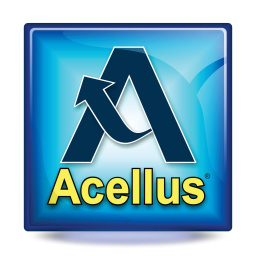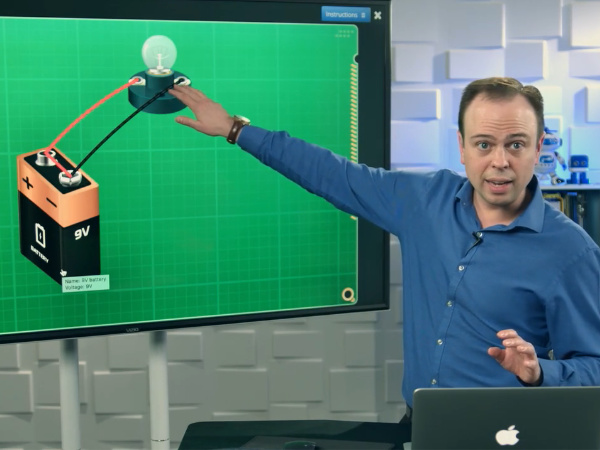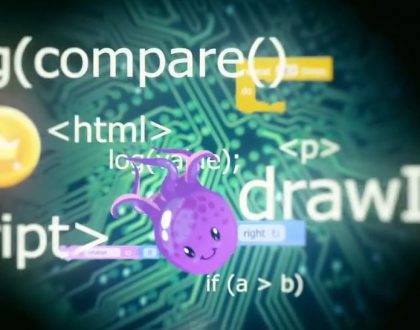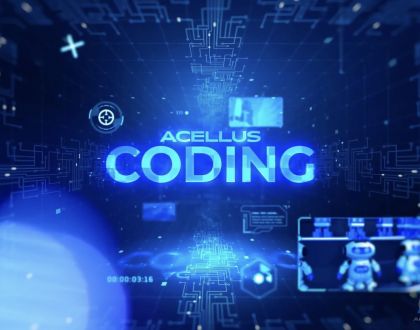STEM 3: Electronics and Coding
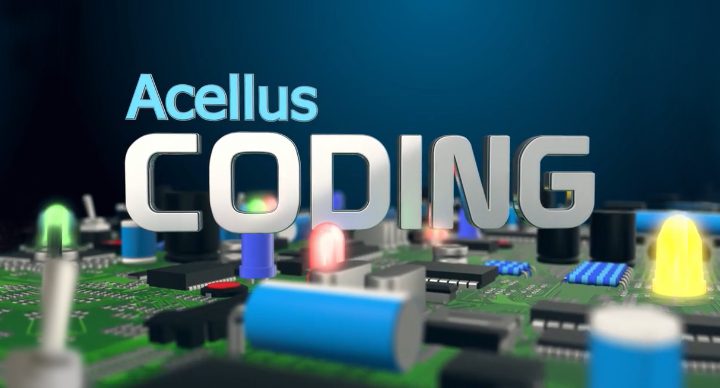
Course Features
Course Details
Course Overview
In the Acellus STEM 3: Electronics and Coding course, students are taught the fundamental principles and aspects of electronics, as well as basic coding for electronics. Utilizing the JavaScript language and an on-screen circuit-board simulator, students are able to code simulated real-world electronics.
They learn about circuits, schematics, and circuit boards, as well as electrical current, resistance/resistors, and seven-segment displays. They study electromagnets, electric motors, and electric generators, as well as semiconductors and microcontrollers.
Students develop their understanding of the JavaScript language, studying code statements, logic statements, and breaks, as well as switch statements. They explore variables, operators, data types, and functions. They discuss arrays, objects, and digital signals.
The Acellus STEM 3: Electronics and Coding course is taught by Acellus Instructor Dr. John Billings.
Sample Lesson - Completing a Circuit
 This course was developed by the International Academy of Science.
Learn More
This course was developed by the International Academy of Science.
Learn More
Scope and Sequence
Unit 1 In this unit students begin their study of electricity. They learn to complete a circuit. They study voltage and how it is measured. They explore what is inside batteries. They debug basic circuits. They investigate insulators, conductors, buttons, switches, and circuit boards. Unit 2 Next students learn about code statements, if/else statements, and while loops. They debug statements. They explore conditional logic and logical comparisons. They investigate using break and continue. They consider switch case statements and debugging logic. Unit 3 Students begin this unit with circuit schematics. They study parallel and series circuits and voltage in series. They explore double throw switches. They debug circuit types. They investigate electrical current and learn to measure it. They consider large and small units. They analyze alternating current and wattage. Unit 4 In this unit students create and debug variables. They investigate arithmetic and assignment operators and the modulus operator. They learn about text string variables and working with text, and they debug text variables and arithmetic. Unit 5 Students next consider resistance and learn to measure it. They explore potentiometers and light emitting diodes. They study resistors in series and in parallel. They consider Ohm's Law. They discuss how to choose resistors. They analyze LEDs in series. They examine seven-segment displays. They investigate hydrogen fuel cells. Unit 6 In this unit students create functions. They study function return value and parameters. They analyze variable scope. They debug functions. They examine event-handler and delayed-event functions. They debug events. Unit 7 Continuing their study of electronics, students delve into electromagnets, magnetic relays, and electric motors and generators. They learn about charging and timing capacitors. They examine rectifier diodes. They consider wireless power. They explore speakers and microphones. Unit 8 Turning to coding again, students study for loops, data arrays, and JavaScript objects. They discuss callback functions. They debug arrays and objects. They code a calculator. They code and break secret messages. Unit 9 In this unit students examine digital signals. They explore OR, AND, and NOT gates. They consider boolean expressions. They study semiconductors. They investigate NOR, NAND, and XOR gates. Unit 10 Next students investigate microcontrollers. They analyze chip power on. They examine input and output pins. They debug pin signals and they explore interrupt pins. They study active low signals. They consider pull up resistors. They debug chip interrupts. They evaluate real world microcontrollers. Unit 11 Students explore binary powers of two, converting binary to decimal, and the relationship between binary and hexadecimal. They learn about base conversions with code. They study binary math, and consider a binary adder. They explore a NAND gate latch. Unit 12 In this unit students examine analog inputs and outputs. They contemplate servo motors and discuss controlling them. They debug analog pins. They explore high current drivers and how they are used. They learn about muscle wire and its circuits, as well as controlling and debugging it. Following this unit students are presented with the Final Review and Exam.
This course does not have any sections.

